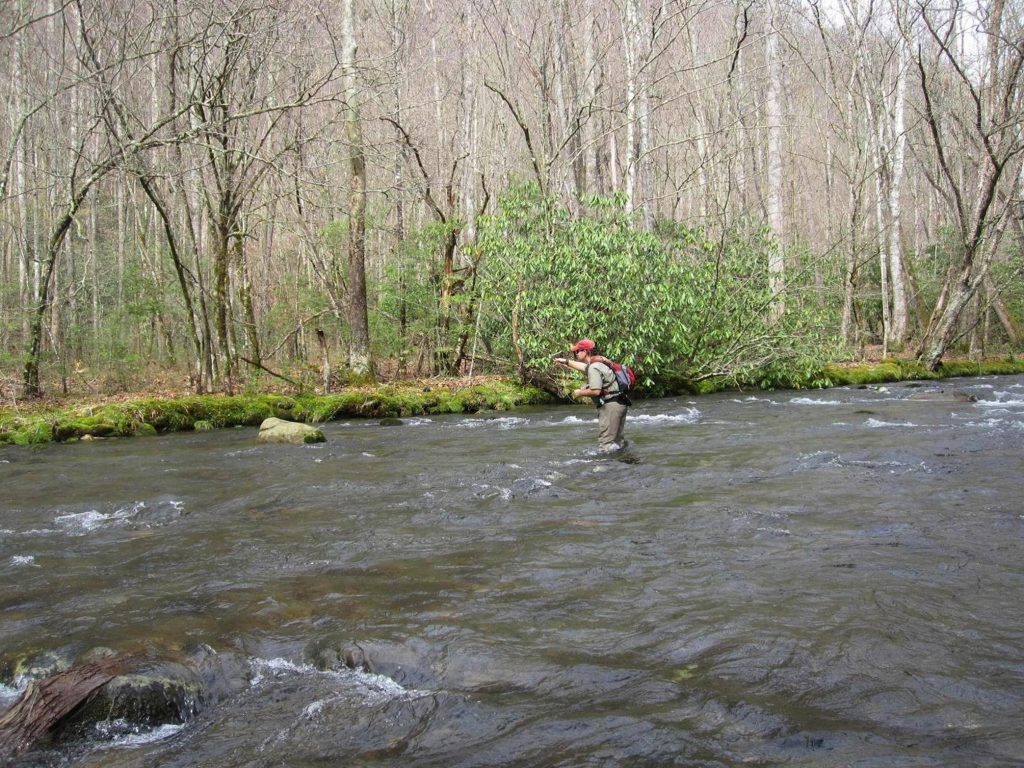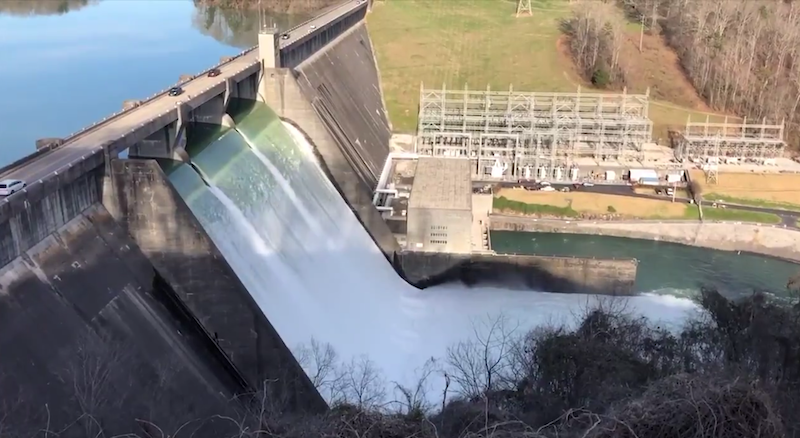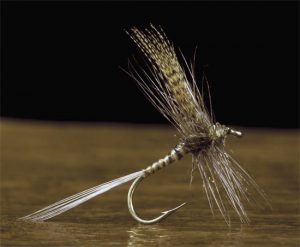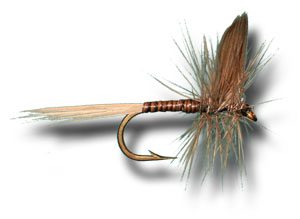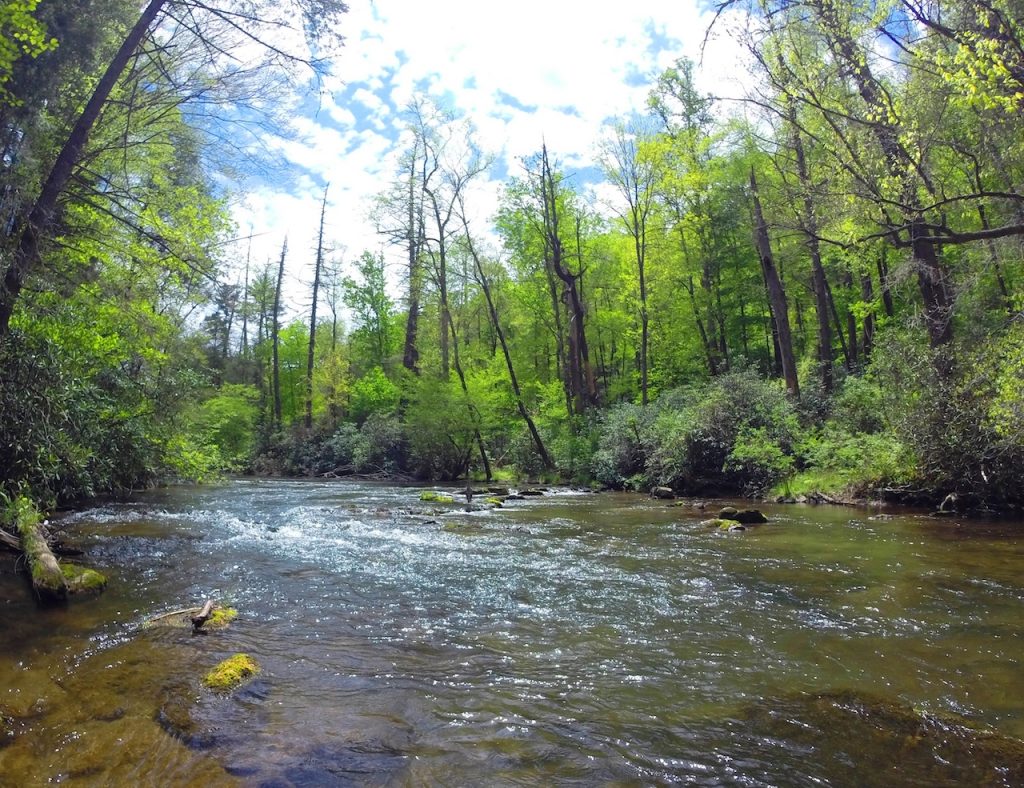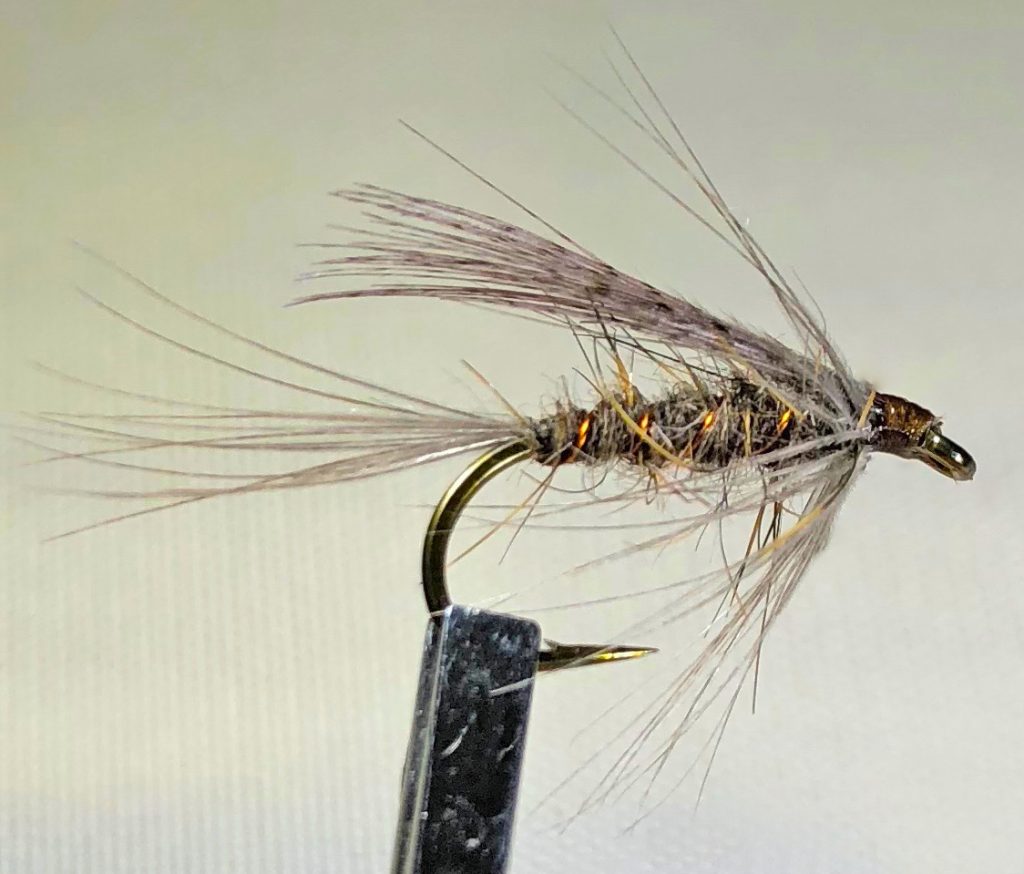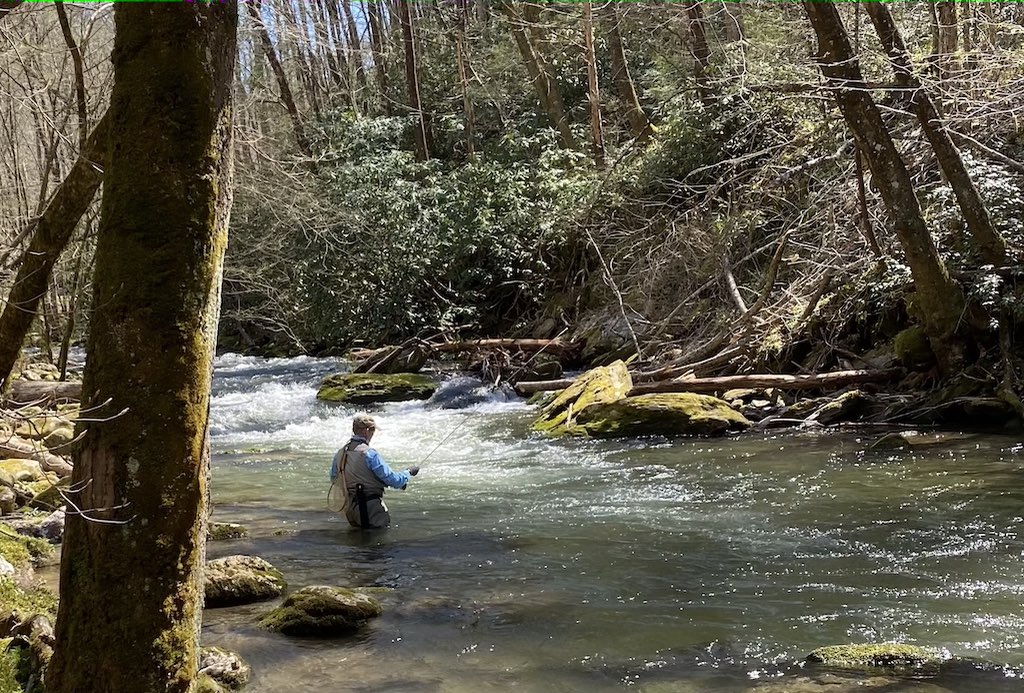
Location
Smoky Mountains
Water Levels

Little River: 579cfs / 2.77 feet
Pigeon: 1160cfs / 2.97 feet
Oconaluftee: 1130cfs / 2.67 feet
Cataloochee: 273cfs / 3.16
Water Temperatures (approximate)
Low elevations: 48 – 52 degrees
Mid elevations: 46 – 50 degrees
High elevations: 42 – 47 degrees
Current Conditions
We are currently in what I would call a recovery stage. It may not be great but it’s definitely heading in the right direction. Water levels have been slowly dropping from last week’s big rains but streams are still a little on the high side. Water temperatures took a big dive too from a significant cold front, but they are slowly climbing back into the 50’s.
Projected Conditions
The week ahead is looking really good. By mid week, temperatures and levels should be pretty close to normal for this time of year. More rain is in the forecast near the weekend but right now, it doesn’t look like the significant systems we’ve seen in the last couple of weeks. Hopefully it won’t play too much havoc on water levels. As always, keep an eye on those stream gauges – reading stream gauges.
Tips
We’re easing back into “typical” early spring conditions. You want to seek out slower water and you want to fish the warmest water possible right now. Try to concentrate your efforts on the middle of the day, stick to the lower elevations and look for areas that get a little more sunlight. Finding Feeding Trout in Early Spring.
Hatches/Fly Suggestions
I had to cancel most trips last week due to high water so I haven’t really had a chance to see if we have any new hatches starting up. I’ll learn a lot more in the coming days. For that reason, I’m keeping the hatch info below the same as last week. However, based on experience and pure speculation, we’re getting to the time when Quill Gordons may be winding down and you may see more Blue Quills and Light Hendricksons. Carry Parachute Adams in sizes 18-14 and you should be in pretty good shape.
Quill Gordons are still popping off here and there. Again, it just depends where you are. I’ve been on pools where I only see two or three, and two pools up they’re coming off everywhere you look. They could show up at any time but mostly, we’re seeing the better hatches mid to late afternoon.
Standard Quill Gordon patterns should work well for topwater, so will a Parachute Adams – sizes #14 – #12. Everyone seems to have their favorite Quill Gordon nymph imitation. Mine is an olive Hares Ear. When the hatch is coming off pretty good, I always do best with an emerger, and my favorite is a Mr. Rapidan Emerger.
Blue Quills are coming off in better numbers in sizes #18 – #16. You’ll probably still run into some Blue Wing Olives, and there is always an assortment of dark caddis and stoneflies this time of year. A size #16 grey Elk Caddis will do the job for most of them. Otherwise, a lot of your favorite attractors should do fine. For early spring, I always like flies with peacock herl, Zug Bugs and Prince Nymphs in particular.
For the featured fly, I’m going to suggest the Red Fox Squirrel nymph for no other reason than it always seems to be a good early spring pattern for me. Clicking the link will give you a lot more info on this fly.
Featured Fly



